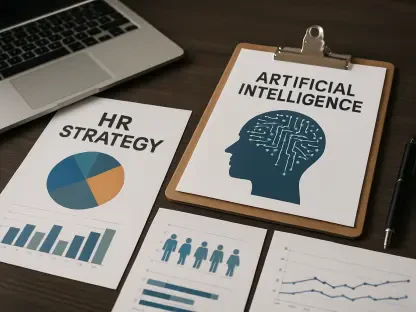Listen to the Article
More often than not, human resources professionals are confronted with a host of challenges owing to increased regulatory complexity, evolving labor legislation, and diversity, equity, and inclusion matters.
This maze of obstacles can be overwhelming, as this pace of legislative overhauls means that what was legally sound yesterday may no longer hold today.
So, what does it take to create a workplace in which trust, equity, and accountability are not concepts but every day realities? The answer lies in mastering HR compliance—a vital yet often misunderstood element of business success. Far from being a box-ticking exercise, compliance’s organizational fabric weaves together the threads of employee rights, responsibilities, and ethical governance.
But with the evolving landscape of laws, union politics, and shifting regulations, how can your business effectively navigate this terrain?
This article seeks to answer this by diving into the complexities of HR governance, shedding light on its critical importance and how you, as a leader, can future-proof your firm in the face of these demands.
The Expanding Scope of Compliance in HR
Compliance plays a vital role in enabling organizations to manage their workforce with both effectiveness and integrity. It guarantees adherence to labor laws, employment standards, and workplace rules across jurisdictions. For instance, in order to reduce corporate accidents and deaths, companies in the US are required under the Occupational Safety and Health Act to ensure safe working conditions. Comparably, in an increasingly digital environment, the European General Data Protection Regulation establishes stringent guidelines for managing employee data, protecting privacy, and guaranteeing responsibility.
So, legal conformity in HR is no longer limited to ensuring accurate payroll and preventing workplace discrimination. Today, it encompasses:
Data privacy and cybersecurity: Under laws like the ones mentioned above or the California Consumer Privacy Act, your firm is responsible for safeguarding employee data and transparently communicating data breaches.
Workplace safety: Regulatory bodies such as the Occupational Safety and Health Act have expanded guidelines for employee health, especially post-pandemic.
Diversity, equity, and inclusion: These efforts are not a “thing” like a program, office, or title, so legal challenges against superficial initiatives are intensifying—leaders must prove genuine progress rather than ticking boxes.
HR functionary units are no longer just compliance monitors; they have become strategic enablers responsible for developing an effective and future-oriented workforce.
Key Challenges for HR Leaders
Regulatory complexity and overload
Compliance with laws and regulations is a significant HR challenge, as the legal landscape surrounding employment keeps evolving rapidly. This is further exacerbated by the web of local, national, and international laws that govern employment practices, data protection, health and safety, and equity in the workplace. For instance, new rulings on pay transparency laws and equitable pay practices are spreading across the US and Europe—tracking, interpreting, and applying these laws is becoming a logistical nightmare for leaders.
Future-proof strategies:
One of the best ways HR leaders can keep their organizations ahead of regulatory changes is through investing in compliance management software. These technologies help track legal updates, automate key processes, and ensure HR procedures align with the latest requirements. The software also ensures that staff members notice and agree to modifications of key workplace policies, keeping them from potential miscommunications that could land the company in a legal battle.
Additionally, creating a dedicated operational accountability department or placing an officer within HR to monitor regulatory updates, analyze their impact on the business, and implement corresponding policy changes will set your business up for success.
Remote work compliance
If your company shifted to remote or hybrid work models, then it must adhere to tax, wage, and employment laws that vary across jurisdictions, because missteps can lead to audits, back payments, or lawsuits.
To future-proof: Develop a comprehensive remote work regulatory policy with clear boundaries for work locations and time-tracking mechanisms, and regularly consult with tax professionals to ensure state or country-specific adherence. Emerging Human Resource Information Systems are indispensable in turning HR into a strategic function as they incorporate policy enforcement monitoring for several regulations, such as tax payment and employee benefit deadlines.
Diversity, equity, and inclusion backlash and legal scrutiny
With organizations striving to create diverse workplaces that embrace employees with varied backgrounds, cultures, perspectives, and experiences, managing diversity becomes a top HR challenge. Superficial or performative initiatives are now under fire, and companies face legal consequences for promoting diversity, equity, and inclusion without quantifiable outcomes.
So, to future-proof, you can prioritize data-driven initiatives, regularly measure and publicly report on your progress, and avoid overly lofty claims. You can also embrace inclusive hiring practices, pay equity audits, and mentorship programs. These methods will allow you as a leader to make sound decisions and stay away from legal conflicts.
Training and Awareness: The Cornerstone of Compliance
A future-proofed organization doesn’t just rely on technology—it invests in a culture of compliance. More often than not, employees are the first line of defense against risks, and ensuring they are well-informed will stand you in good stead.
To make sure that the training resonates with your entire team, you need to:
Offer annual refresher courses, where you cover core topics such as prevention of harassment, cybersecurity best practices, and data privacy regulations.
Take on scenario-based training, where real-life scenarios allow employees to recognize possible risks and respond accordingly.
Make policies and obligations easy to understand and accessible.
Regular training encourages accountability and makes employees sensitive to evolving risks.
Leadership’s Role in Making Adherence Successful
Good leadership involvement is vital to embedding compliance in an organization’s culture. When C-level executives approach it as a strategic priority and not a nuisance to be tolerated, employees take it more seriously.
HR leaders should work closely with senior executives to:
Establish a vision where both parties define what a successful approach will look like for the company.
Tie programs to top-level business objectives, such as risk reduction or improved employee experience.
Invest in assets, where HR staff is provided with the resources and capital they require to comply efficiently.
Though the rules may keep changing, a proactive approach will ensure that your business leads. It all starts at the top.
To Conclude
Regulations will continue to evolve—that is the one certainty HR leaders can count on. This makes agility a non-negotiable strategy for future-proofing. The ability to move swiftly in the wake of new court rulings, societal shifts, and business disruptions will define organizations that thrive versus those that will fall behind.
Proactively managing risks isn’t merely a matter of avoiding penalties—it’s a matter of creating a workplace where integrity, accountability, and trust are ingrained in the culture. By harnessing technology and developing a leadership-driven culture, HR leaders can turn compliance from a burdensome requirement into a significant competitive edge.
Lead with confidence, no matter how the compliance landscape shifts.









